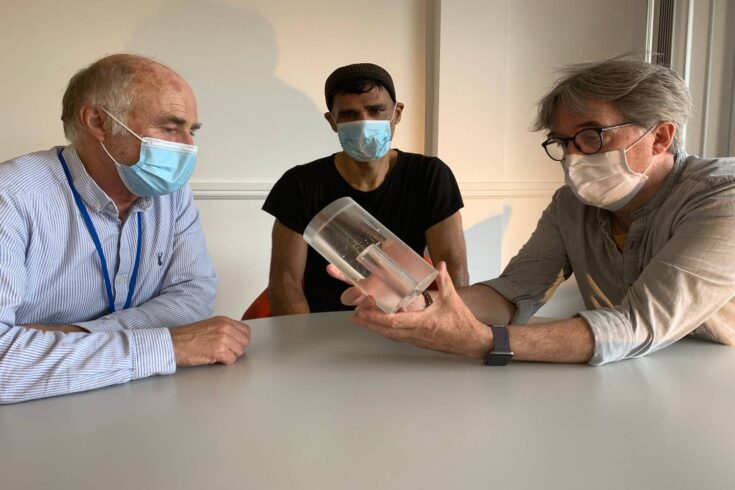The AHRC-funded Polar Zero exhibition will bring cutting-edge climate science to life through inspirational art installations throughout the COP26 conference.
Polar Zero opens at the Glasgow Science Centre on 2 October. It will see works by artist and Arts and Humanities Research Council (AHRC)-funded PhD student, Wayne Binitie inject an artistic and cultural dimension to the climate negotiations at COP26.
At a time of accelerating global warming, rapid glacier melting and rising sea levels, Polar Zero invites us to reflect on humanity’s impact on our past, present and future climate.
Innovative and immersive works of art
The centrepiece of Polar Zero is a cylindrical glass sculpture encasing Antarctic air from the year 1765: the date that scientists say predates the Industrial Revolution.
Also on display is an Antarctic ice core, a cylinder of ice drilled from an ice sheet, containing trapped air bubbles that reveal a unique record of our past climate.
Other innovative and immersive works including personal testimonies from climate scientists. These works will invite audiences to engage with climate science as never before to explore the exhibition themes of hope and optimism.
Combining art and science
Polar Zero is a collaboration between:
- AHRC
- The British Antarctic Survey (BAS)
- The Royal College of Art (RCA)
- Global engineering and design firm Arup.
For the last five years, Wayne Binitie has collaborated with BAS scientists to create public exhibitions which marry art and science using the engineering expertise of Arup.
Polar Zero continues this tradition of using the emotive power of the arts to inspire people to connect with scientific research and to inspire lasting change.
World-first innovations
Polar Zero marks the first time that anyone has attempted to extract ancient air from an ice core and encase it within a glass sculpture.
Exhibiting an ice core without it melting completely requires technical calculations and creative thinking to make the right amount of insulation while enabling the viewer to get up close.
Polar Zero visitors will experience the sound of ancient air bubbles popping as an Antarctic Peninsula ice core emerges from an insulated tube, capturing the fragility of the polar ice.
Tackling pressing contemporary issues
Professor Christopher Smith, AHRC Executive Chair said:
Polar Zero epitomises the power of the arts and arts research to tackle pressing contemporary issues such as climate change.
It translates crucial but complex scientific research in a way that will resonate deeply and emotionally with diverse audiences to inspire lasting change.
AHRC is proud to support this ground-breaking exhibition which demonstrates what can be achieved when the arts and sciences come together.
Wayne Binitie, the artist behind Polar Zero and AHRC-funded PhD student at the Royal College of Arts said:
About five or six years ago I formed a unique relationship with BAS and Arup.
Our collaboration involves artistic creativity, ice core science and advanced engineering.
It’s my hope that people who experience these works will gain a better understanding of humanity’s impact on the natural environment and its climate systems.
Dr Robert Mulvaney, BAS Glaciologist said:
Our ice core research reveals the human impact on our climate.
This research collaboration will, I hope, encourage people to think about the past, present and future.
It has been a journey of discovery for artist, scientist and engineers, involving high levels of creativity that I’ve found very exciting.
Antarctic ice is an archive of the Earth’s hidden climate history – the skill of the artist is in helping us tap into human emotion to provoke curiosity, action and hope for the future.
Dame Jo da Silva, Global Sustainable Development Leader, Arup said:
Art is very important because it can encapsulate a lot of complexity.
With a subject like climate change, which is so incredibly complex, we need to engage emotionally.
When you look at a piece of art that has been stimulated by climate change, it sets your mind turning over and you contemplate things in a different way.

